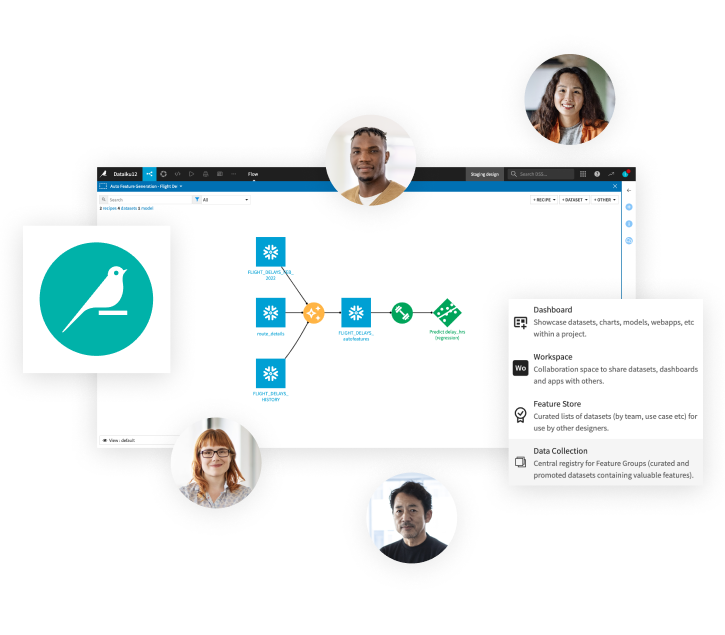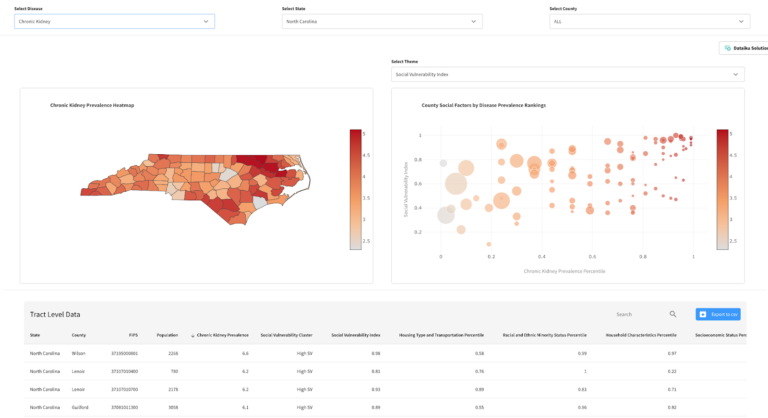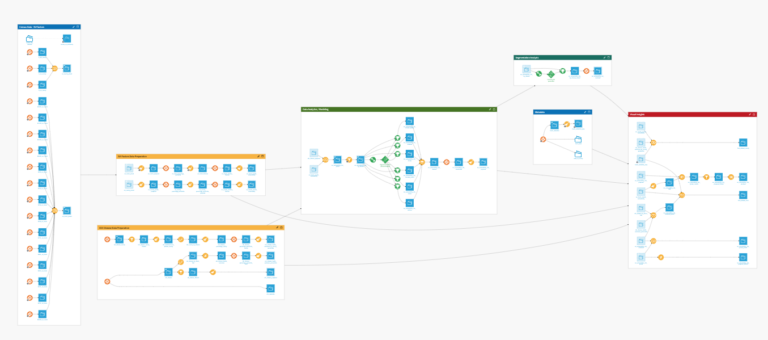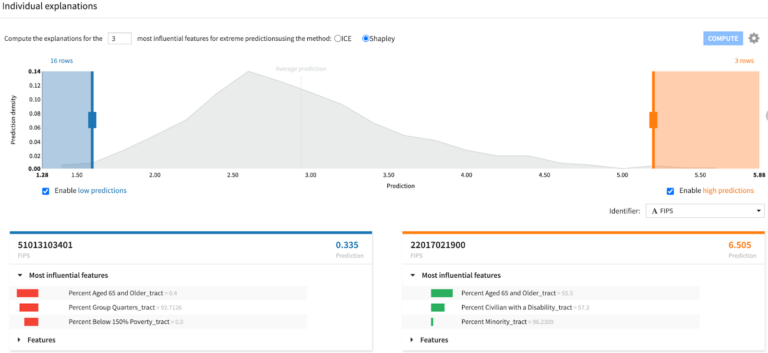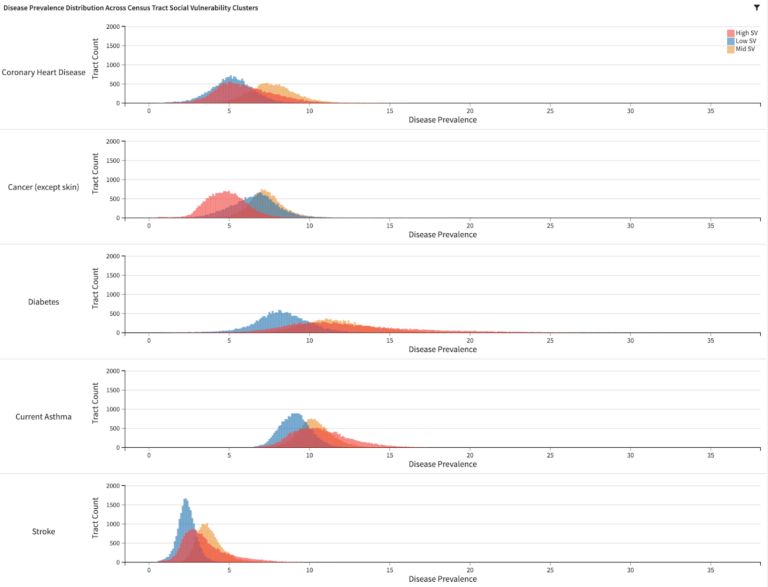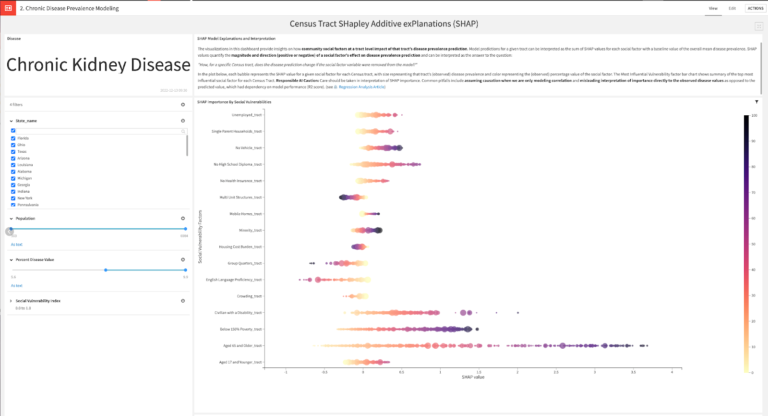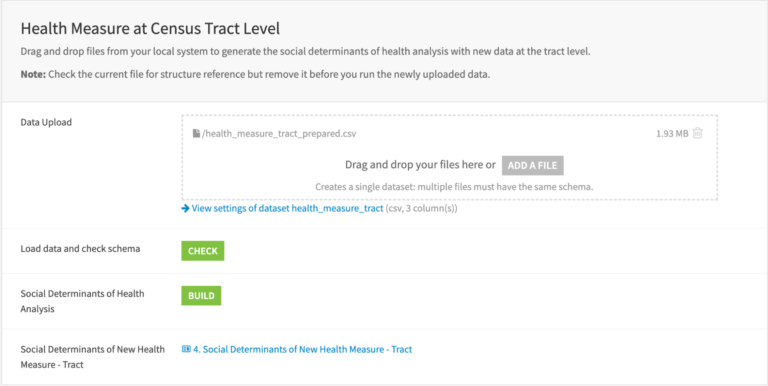The goal of this plug-and-play solution is to discover where community-level social disparities and vulnerabilities align with chronic disease prevalence to drive therapeutic access and health equity programs. . More details on the specifics of the solution can be found on the knowledge base. This Solution is only available on installed instances.
Business Overview
Social determinants of health (SDoH) are conditions in the places where people live, learn, work, and play that affect a wide range of health and quality-of life-risks and outcomes. Research has shown that SDoH can account for up to 90% of health outcomes, whereas medical care accounts for only 10%-15%. Understanding the social factors associated with chronic disease prevalence not only aligns with social responsibility programs but also can deliver ROI with improved patient outcomes by:
- Identifying resources, therapeutics, interventions for populations incorporating both social and disease risk vulnerabilities
- Developing responsible patient-centric risk-adjusted payment or care models to ensure health equity
- Impacting operational/spending/quality metrics for both precision preventative care and therapeutic access equity.
Hospitals, public and private health services systems, health insurers, and government agencies, as well as pharmaceutical and medical device companies are all increasingly tasked to leverage population/community health insights of social vulnerabilities tied to disease prevalence to inform business practices to address health/disease and therapeutic access disparities. With this solution, healthcare and life science professionals accelerate the discovery of how SDoH disparities affect at-risk populations, allowing refined market access strategies for drug manufacturers, new coverage policies from payers and improved facility outreach and care programs from health services.
Highlights
- Collect and collate data via API from US Census on community social factor conditions and CDC chronic disease prevalence and risk behaviors surveys
- Dynamically explore complex data patterns of social determinants of health from an interactive health equity web application
- Identify and visualize patterns in community-level social factor trends tied to chronic disease with Dataiku’s descriptive analytics and charts and unsupervised ML
- Upload new health measures prevalences at county or tract level to instantly create new analyses via a Dataiku application.
A health equity web application to explore community disease and social vulnerabilities
Discover regions based on disease prevalence and social vulnerability themes with a dynamic web application that can be deployed into systems for health equity outreach
Explore !
Reproducible, automated flow for pulling public data via API for ML-driven insights
Automate and visualize the complex data preparation on tract and county level US Census and CDC Health Outcomes survey data on community social factors and health-related outcomes to actionable analytic insights
Explore !
Explainable models for social factor associations with chronic disease
Fit interpretable regression models to explore social factor impacts on chronic disease prevalence. Go deeper with SHapley Additive exPlanations (SHAP) to find SV features important to community disease prediction.
Explore !
Regional segmentation to scale programs and outreach efforts
Cluster communities based on social factor rankings to discover potential regional patterns in undiagnosed chronic disease, align cluster trends across diseases, and optimize program outreach as a national level.
Explore !
Interactive visual dashboards to drive inclusion of SDoH in market access, care, and coverage
Allow drug manufacturers to incorporate social disparities in therapeutic market access, health systems to drive improved care programs tailored to social needs, and insurers to build responsible coverage plans to increase equity in disease treatment and outcomes.
Explore !
A Dataiku Application to dynamically input additional health measures data and create new insights
Explore and extend pre-built SDOH analyses by uploading additional health measure prevalences at the US Census county or tract level.
Explore !
